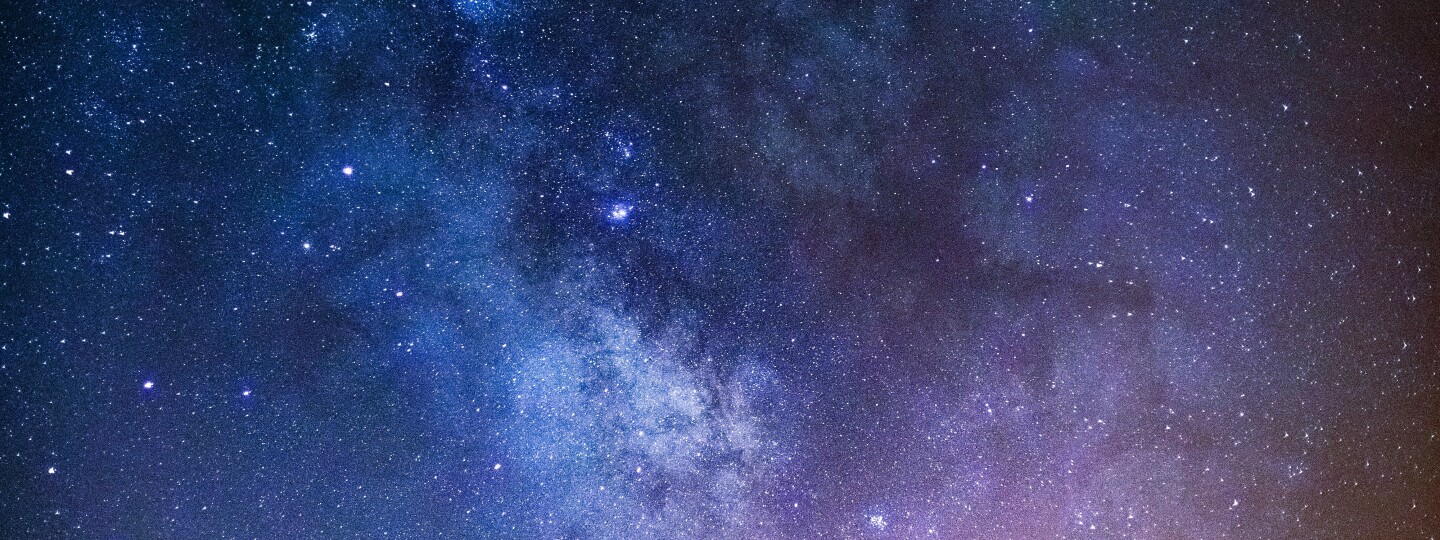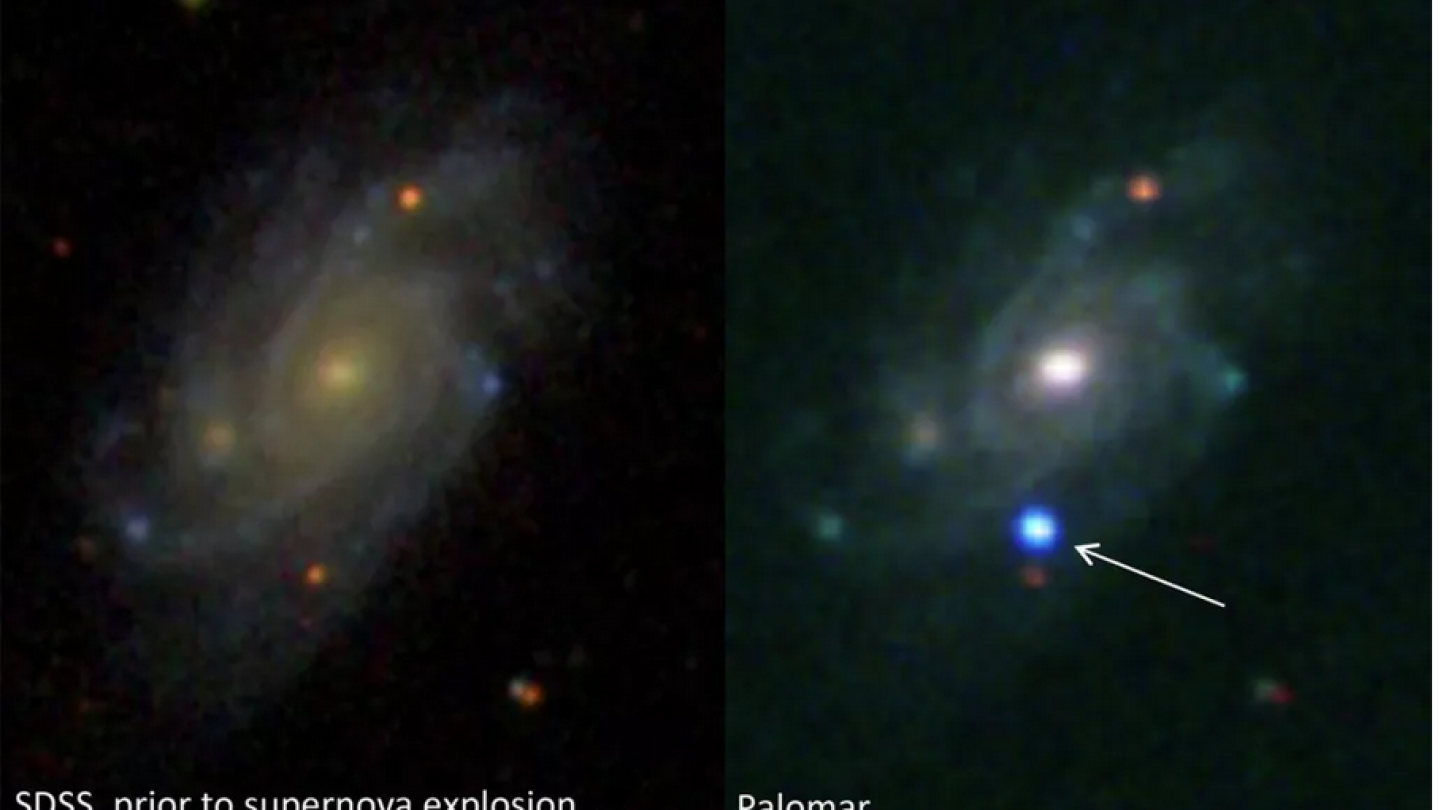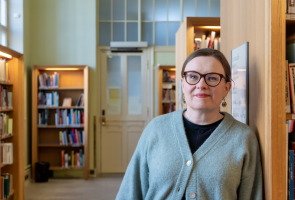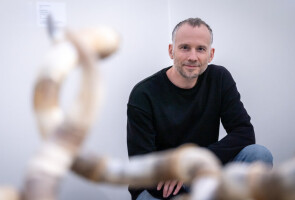Astronomy has traditionally required a fair amount of travelling by researchers, as observatories are located around the world. As the pandemic drove people to rely on remote connections, a research group from the University of Turku adopted a new type of arrangement to observe the skies.
An international research group from the University of Turku studies astrophysical transients such as supernovae: these are exploding stars whose luminosity suddenly increases in a short period of time, and which can be observed for a few months before they fade away. In March, the researchers stayed up for ten nights, carrying out observations remotely with the New Technology Telescope (NTT) located in Chile and managed by the European Southern Observatory ESO.
– Our group is responsible for this task roughly once per year. This year, however, due to the coronavirus situation, the observations were carried out using remote connections. The observations usually started around 1 am Finnish time and finished around noon, says Postdoctoral Researcher Claudia Gutiérrez from the Finnish Centre for Astronomy with ESO (FINCA).
The observation period in March was part of the international ePESSTO+ programme. When the night has ended in Chile, the researchers quickly analyse the data and classify the newly observed objects such as recent supernovae. In the afternoon, the researchers release a short database report based on the classifications, and the information on the observed objects is available for astronomers around the world.
Supernovae Reveal Information about the Evolution of Stars and Galaxies
– Supernovae are studied to better understand the evolution of stars. They are luminous lighthouses of the universe, and can also help us to study the acceleration of the expansion of the universe and evolution of galaxies, says the leader of the research group, Professor of Astronomy Seppo Mattila.
Supernovae also have an important role in the evolution of galaxies: they cause new stars to form and enrich the interstellar medium (i.e. the matter between the stars) with heavier elements. They also function as important tools in measuring the distances between galaxies, and have enabled the researchers to discover that the universe is expanding at an accelerated rate that is attributed to so-called dark energy.
Claudia Gutiérrez coordinates observations and longer-term follow-up of targets and analyses and interprets the collected data.
– New supernovae are found when dedicated search programmes compare images taken at different times and detect differences between them. Supernovae and other transients are objects whose brightness increases strongly in a short period of time. Many survey telescopes observe the sky systematically every night and compare the images to discover new transients, Gutiérrez describes.
Collegium Researcher Erkki Kankare from the Department of Physics and Astronomy studies supernovae in luminous infrared galaxies. Compared to the Milky Way, these galaxies produce much greater numbers of new stars, and supernovae are known to explode in them more often. This population of supernovae has yet to be researched extensively because optical observational programmes have not managed to find them in significant numbers.
– It is difficult to discover supernovae in these galaxies because the latter are very luminous and rich in interstellar dust: small graphite and silicate particles, which make the supernovae appear much dimmer than they truly are, says Kankare.
One of the long-term objectives of the researchers is to estimate robustly how many supernovae are left undiscovered by survey programmes in these galaxies. If the researchers are able to reach an accurate understanding of this, supernovae can be used as a tool in themselves to unravel the history of star formation in the universe.
To study supernovae, researchers utilise spectroscopy that allows them to observe the distribution of light of different wavelengths received from an object. Nearby supernovae can be studied spectroscopically up to the point when they are around a few hundred times dimmer than their maximum brightness. Academy Research Fellow Hanindyo Kuncarayakti focuses on studying the spectra of supernovae in their late stages and the supernova environments in their parent galaxies.
– In a supernova, the explosively expanding outer parts of the star become thinner with time. Eventually, we can see through the almost transparent explosion debris and study the inner parts of the star. This is very interesting since normally it is impossible to see the core of a star. With this technique, we can study for example the chemical composition and structure of the core of the star, says Kuncarayakti.
– By combining this information with information on supernova environments, we can statistically determine the properties of exploding stars also for larger samples, Kuncarayakti continues.
Kuncarayakti is responsible for building astronomical instrumentation and leads the construction of a calibration unit for the SOXS instrument at the University of Turku. SOXS is a spectrograph optimised for observations of astrophysical transients and other variable objects and will start its operations at the NTT telescope in Chile at the end of 2022.
Astronomy in Real Time
A massive star which explodes as a supernova leaves behind either a neutron star consisting of extremely dense matter or a black hole.
– In some cases, a stellar binary system can leave behind two neutron stars or black holes orbiting each other as a result of the two stars exploding as a supernovae. When these eventually spiral in and merge together, a huge amount of energy is released in the form of gravitational waves. If at least one of the components is a neutron star, a bright source of light can be expected as well, says Rubina Kotak, another member of the research group.
Gravitational waves can be detected with the extremely sensitive instruments located in Italy, Japan, and the United States. As soon as there is an announcement that gravitational waves have been detected, the research group from the University of Turku aims to observe any associated visible light counterpart as soon as possible. This is real-time work in astronomy.
– For the first time, we are able to study the same objects using both gravitational waves and electromagnetic radiation such as visible light, says Seppo Mattila.
Astrophysical transients are studied from different parts of the world. In Chile, the observations are carried out with ESO telescopes. When it comes to the objects of the northern sky, the group mainly observes them using telescopes at the La Palma observatory on the Canary Islands, such as the NOT telescope co-owned by the University of Turku, and the GOTO facility, run by an international consortium, including the University of Turku
The NOT telescope is used for many types of research projects. Erkki Kankare leads an observing project focussing on supernova research together with researchers from Stockholm University and Aarhus University. Altogether over 30 researchers from five different institutes participate in this project.
A member of the NOT telescope staff carries out the observations following detailed instructions prepared by the researchers. The data are available for researchers practically in real time. In the case of the NOT telescope, this method was already in use before the pandemic.
Although remote connections have already been used in research prior these exceptional times, the pandemic has forced us to come up with new ways to utilise them. Gutiérrez reminds us that especially during observations at night time, efficient communications are essential.
– However, operating telescopes on site and looking at the beautiful sky cannot be done at the moment. Such experiences are also important especially at the early stages of the career when one wants to feel like a real astronomer. But at the moment, we do what we can, Gutiérrez summarises.






